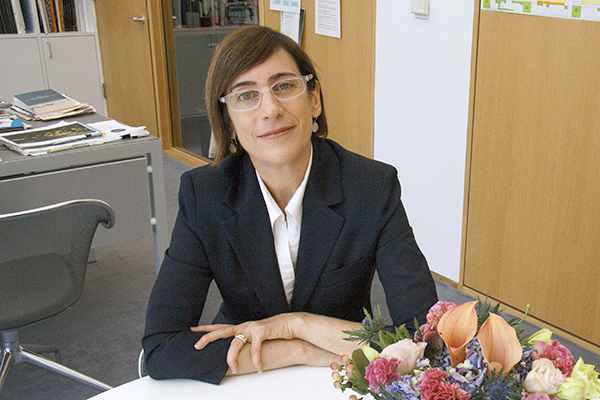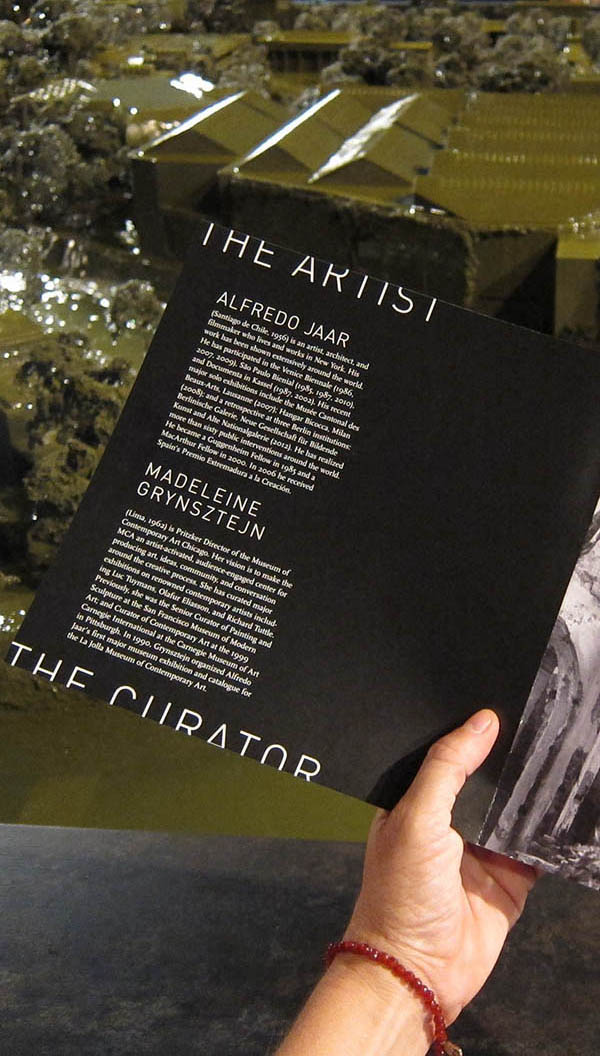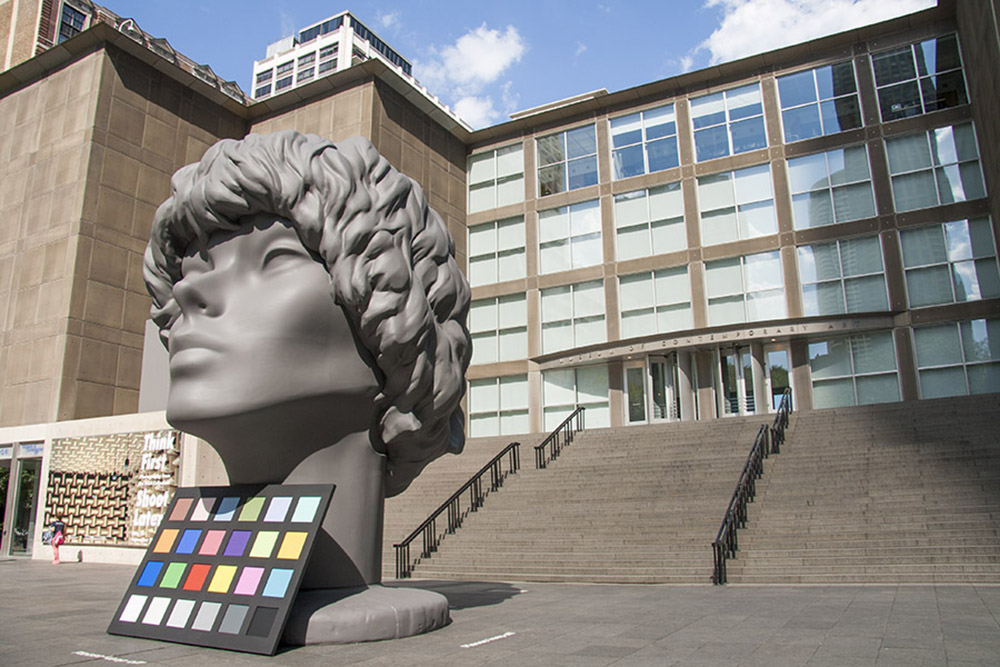| Madeleine Grynsztejn, director of the MCA since 1998. | ||
 Listen to the 17 minute conversation. Madeleine Grynsztejn, director of the Museum of Contemporary Art Chicago. Photographed in her office at the museum. We had a conversation about her history, her ideas about the museum, and how she defines "contemporary art." Grynsztejn was a curator for twenty-thre years before assuming the directorship of the MCA. Beginning in 1986 as a curator at the La Jolla Museum of Art, she went on to similar positions at the Art Institute of Chicago, the Carnegie Museum of Art and the San Francisco Museum of Modern Art.  In my August conversation with Grynsztejn, I mentioned that I would be in Venice, Italy, the following week and she talked a bit about being the commissioner of Chile's entry in the 55th Venice Biennale and her role as the first to exhibit Alfredo Jaar in the U.S. The image, above, shows the exhibition brochure within the installation space as Jaar's model of the "Giardini" portion of the exposition sinks into a massive green pool that mimics the city's canals. |
 View of the MCA Chicago in August 2013. Grynsztejn's office is within the space behind the two center windows at the top floor. Work in the foreground by Amanda Ross Ho. In response to my question of how she would describe her role as the director of the MCA, Madeleine Grynsztejn responded, "I'd like my tenure as the museum director to reflect a term that is relevant... relevant and generous." Grynsztejn speaks of the Museum of Contemporary Art as ideally being an "artist activated, audience engaged space," a phrase that she refers to as a mantra and a concept that "lies at the core of our vision statement." In talking about the difference in the avant garde model of contemporary art upon which the museum was founded in 1967, and what avant garde means today, Grynsztejn referred to the now famous 1975 Chris Burden performance piece, Doomed, where even the museum staff was not sure what was going on as he lay immobile for 45 hours until one of them gave him a pitcher of water, and thus ended the performance. According to Grynsztejn, those years of artist-focused work where the museum served as a catalyst to form new work have expanded to give equal attention to the audience. Grynsztejn said that today's avant garde model is of the museum as a civic agent, and the museum as a prompter for civic dialogue, and that "we create citizens and not consumers." She sees the museum as a platform for creating art, and also for promoting ideas and conversation with the artists and with the audience. In the last five minutes of the conversation, Grynsztejn addresses the distinction between contemporary and modern in the context of the museum's mission. Museum of Contemporary Art Mission Statement: The mission of the MCA is to be an innovative and compelling center of contemporary art where the public can directly experience the work and ideas of living artists, and understand the historical, social, and cultural context of the art of our time. The Museum boldly interweaves exhibitions, performances, collections, and educational programs to excite, challenge, and illuminate our visitors and to provide insight into the creative process. The MCA aspires to engage a broad and diverse audience, create a sense of community and be a place for contemplation, stimulation, and discussion about contemporary art and culture. |
|